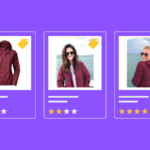Your customers are smart. It only takes a simple Google search to ensure your business is legit. Shoppers know the difference between brand- and consumer-written product information, which is why they trust user-generated content and visuals.
The Snapshot for Ecommerce report found just 3% of shoppers say they never look or rely on visuals prior to making a purchase. To say visual content is essential to your product sales is an understatement.
It’s everything.
Visuals inject confidence into consumers and to be honest, shoppers prefer it over written content any day. Most people like to see products in use or worn by people that look like them. It creates a more believable story when shoppers see products in use by similar people.
The same report also discovered 88% consumers specifically seek out user-generated content, such as images and videos, from consumers like them. So how does your business go about sharing consumers’ content on your social channels, landing pages and marketing materials?
Don’t overthink it–we’re here to help.
Follow these seven steps to amplify user-generated content to build trust and tell better product stories:
1. Develop Your Story & Be Authentic With Content
If you don’t have a story for your brand, then what are you actually telling your customers?
A brand story doesn’t have to be your sales collateral, advertising materials or the story of your company’s origin. Instead, a good brand story shows customers what inspires you and doesn’t tell them what you do.
At the same time, a good brand story is short and sweet. Anything too long gets confusing or uninteresting. If you’re looking for an example, the outdoor gear company, Yeti, does a great job at promoting its customers with user-generated content who understand their simple message.
https://www.instagram.com/p/BvfMzunj-4y/
Yeti is clear about its mission: build the cooler you’d use every day if it existed. Not only do they keep it simple with #BuiltfortheWild, but Yeti easily collects content from its customers. The company works with influencers and promotes them in their own ambassador group to tell their story through user-generated content.
Brands with a simple, but influential story, gets consumers to show why the brand inspires them as well. This is an amazing perk of telling an awesome story–you drive engagement and get customers to tell their stories too.
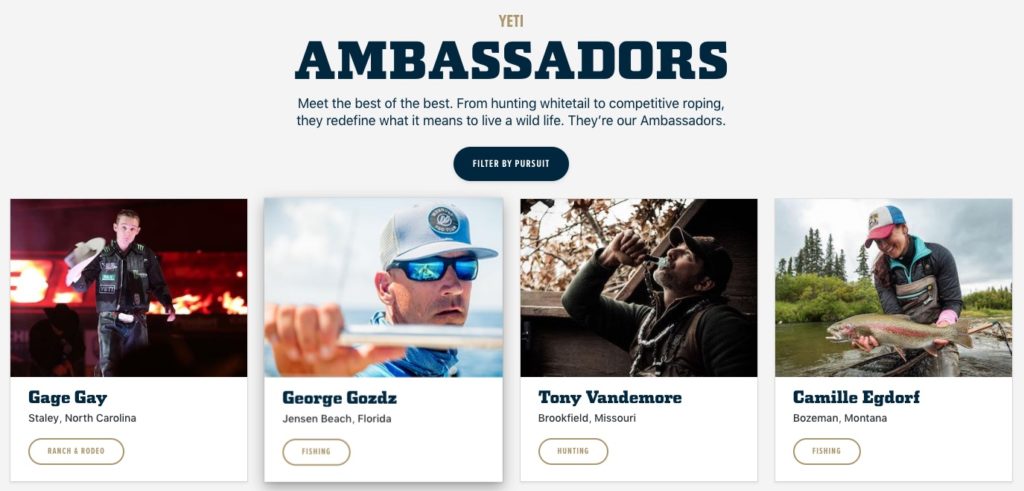
In a 2018 Bynder and OnBrand survey, the top marketing initiatives were customer experience and acquisition as well as brand loyalty and awareness. Tell your story and encourage engagement and loyalty through user-generated content by sharing customer voices.
Make it even easier by having a good story to tell and share with your customers.
2. Build a Trusted Community & Pick Your Space Wisely
As you develop your brand’s story, it’s also time to build a community and get the word out. Luckily for you, user-generated content helps brands increase engagement and conversations across social.
Make it as simple as possible to connect to your customers and try to spark conversations through user-generated content. This will help you increase trust by repurposing your brand advocates. That will not only showcase their personality, but affiliate your brand and customers together as a community.
https://www.instagram.com/p/BvfbuTcncCW/
It’s a win-win for both the brand and the advocate.
However, it’s just as important for brands and retailers to choose an appropriate community space. This is where you’ll drive conversations, collect content and promote your advocates.
So where do you go?
For most brands, our best bet is Instagram. Why? It’s pretty simple–data from Instagram shows almost 80% of users follow at least one brand. Build your community where you can create the most influence and where you have the best chance to drive sales.
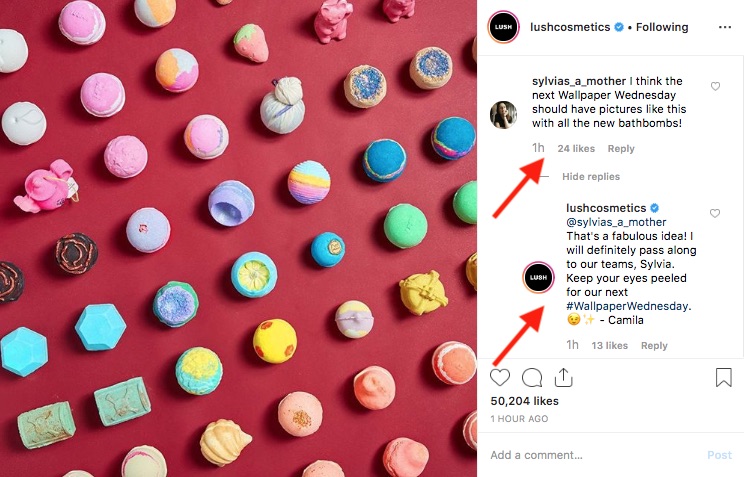
A good community is about engagement, and your micro Influencers do just that.
In fact, a SocialPubli study discovered everyday influencers own an engagement rate seven times higher on Instagram than those with large audiences.
You don’t have to pay a hefty sum just to push your brand across Instagram.
Try to drive organic engagement with a community your customers will enjoy and in space they’re already present.
3. Encourage User-Generated Content & Promote Your Rockstars
Once you build your community and craft your brand message, make sure your advocates know what type of user-generated content to submit. It might sound simple, but if your followers don’t know what you want, what content will get?
The Big Green Egg simply asks its users what they’re grilling this weekend. More likely than not, they’ll engage or repurpose some of the better user-generated content sent their way, whether the company is tagged in content or uses #BigGreenEgg.
https://www.instagram.com/p/Bvmm3FXjkqX/
Prevent content collection problems right from the beginning by letting people know what you’re looking for. But don’t overthink production value too much.
Consumers like to see authentic content. When you ask for something that looks exactly like your professional product photos, it’s comes off in-genuine and unrealistic for most customers.
Further data in the Snapchat for Ecommerce report found 44% of shoppers believe visuals of a product from another customer are more credible and important than professional content from your brand. When shoppers make a purchasing decision, they want to know what they’re really getting. User-generated content helps pull back the curtains on your products.
https://www.instagram.com/p/Bvj8ikgFv2X/
CVS regularly posts content from a wide range of their rockstar influencers, but the user-generated content quality never seems too polished. Instead, CVS focuses on promoting a more “real life” version of its customers and products.
If you’re looking to just promote more product-specific visual content, there are some great companies to follow for inspiration. For example, Target Style focuses on the actual product in a lot of their user-generated content.
https://www.instagram.com/p/BvRjsbgglsH/
Target Style promotes their customers’ content and provides more details of the actual product. Several brands and retailers understand their visual content quality doesn’t have to be “high-res” or “edited” like in-house product images.
It’s all about creating an authentic look that doesn’t seem staged. That’s why it’s essential to be as detailed as possible when you ask for user-generated content.
Your customer base isn’t thinking like a marketer, so how will they what to send if you don’t tell them?
4. Organize Your Content Collection & Get Verification to Use It
The ideas are in place, you’re engaging your audience–it’s campaign time, right?
One big question–how do you collect and authenticate your content?
First off, did the user give you permission to use their visuals? Is the written approval from the user only in a direct message?
You can’t just take the content. That’s stealing.
It’s important to get permission before you publish anything to your own Instagram account or website. Also, a simple mention to the content owner is not enough. Many brands find out the hard way you need verification to collect users’ content.
https://www.instagram.com/p/BvfKIBAFw-P/
A company appropriately collecting content is Forever 21. They collect, promote and authenticate their user-generated content through its #foreverbabe branded hashtag.
Brands and retailers need to know even when shoppers’ accounts are public or use your hashtag, you still need permission use the content! Additionally, it pays to have that agreement on record.
Collecting content isn’t the easiest task–especially when you have to find, vet, authenticate and document the process. This process often gets overlooked, which is why you can’t just rely on Instagram’s native platform to collect content.
How to Collect User-Generated Content Without the Hassle of Endless Searching
All of those steps might have you reconsidering user-generated content.
Don’t get scared off just yet.
At PowerReviews, we’ve made it incredibly simple and hassle-free to collect, authenticate and display content through our Visual and Social Suite.
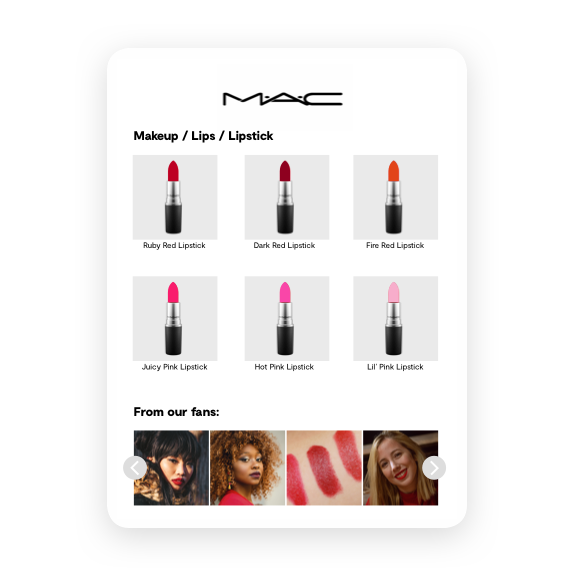
When our customers use our content collection tools, social and image collection improves by 221%. This also includes automatically getting the image rights and documenting the approval.
The Visual and Social Suite was built on the idea to collect your users’ best content and get authentication in the fastest way possible. Collecting user-generated content through an all-in-one platform makes it so much easier for marketers wanting to promote consumers’ visuals.
Once you’ve gathered the content, funnel these visuals to your product pages, social feeds or wherever else you want to highlight your customers. You tell better stories when you empower customer voices.
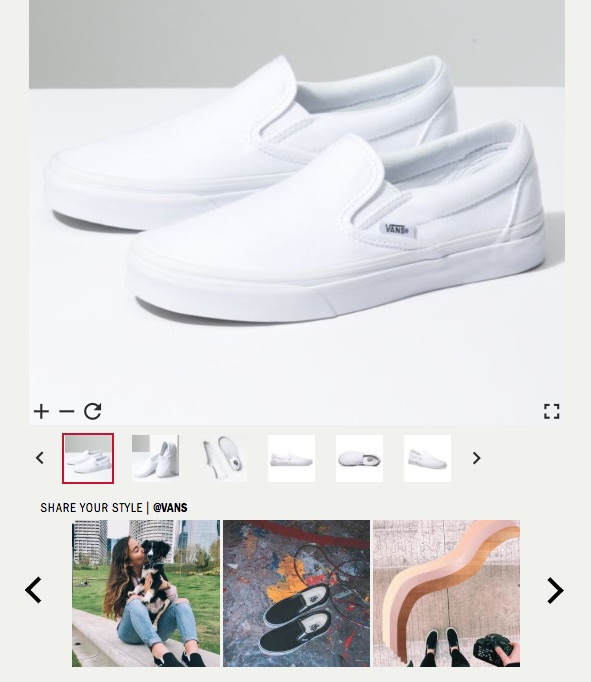
So make sure your content collection can display an interactive gallery on your category or homepage to increase sales. When people see these real-life visuals, shoppers feel more confident to buy.
Speaking of…
Showcase User-Generated Content on Product Pages
We mentioned it in the above tip, but truthfully, this needs its own section. The PowerReviews Snapshot for Ecommerce report mentioned earlier found when products have visuals and text within a review, shoppers are 72% more likely to make a purchase.
What’s more telling is 20% of shoppers said they would be even more likely to buy a product with user-generated content, like consumer-submitted photos and videos.
Consumers want more truthful images of your products and implementing user-generated content on your product pages increases confidence.
Say you’re thinking of buying a new pair of frames through an online-only company. All the “virtual try-on” features give you an idea of how you’ll look, but it doesn’t match the realistic view of glasses on your face.
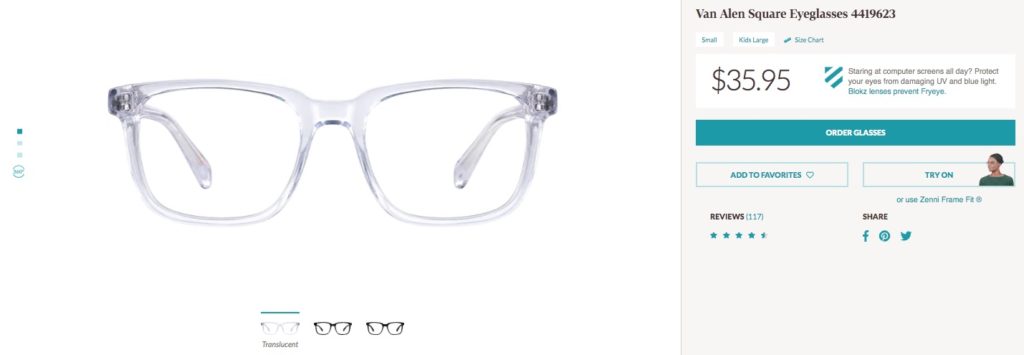
To give more buyers confidence, Zenni Optical offers an integrated user-generated image collection display that shows customer content. With the branded hashtag #justgotmyzennis, you see the frames on people that look like you or have a similar face shape.
Additionally, the eyewear company collects a ton of great user-generated content to show shoppers on its product pages.
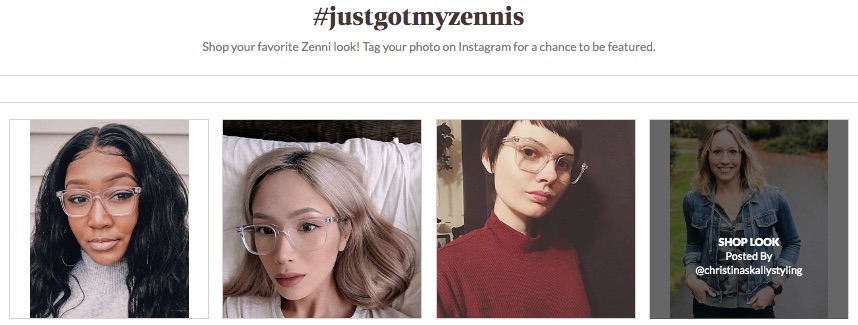
Some customers might’ve been hesitant to take a chance with more flashy frames. But with the image display feature on the product page, you instill buying confidence by showing the frames on people who might just look like you.
Making the path to purchase easier should always be the main goal. By providing user-generated content, you encourage and strengthen buyers’ decisions.
6. Don’t Forget to Ask for Visual Content in Reviews
We’ve covered the reasons why visual content helps people buy, but what are some other ways to collect visuals?
While social media channels like Instagram are goldmines for product visuals, so to are your customers who just bought from you. When you ask for review content from your customers, don’t forget to encourage them to add visual content as well.
We already know that at least 40% of shoppers always seek out visual content when deciding to buy, so why not collect visuals from those who just bought from you? Adding image upload buttons from social or your phone’s photo library makes visual collection simple when leaving a review.
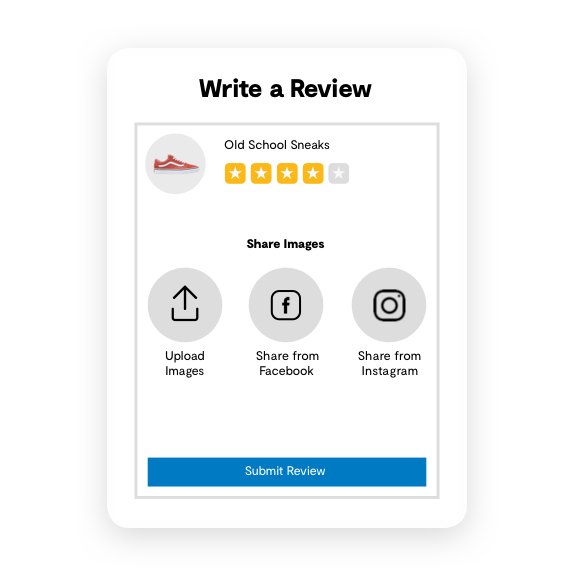
However, a lot of brands know it’s not easy collecting a ton reviews in the first place. And we understand that. But there are tools to get more authentic and valuable review content for your products.
For starters, it’s really important to make review submission as easy as possible. Forcing your customers to open links, click to add review text and then loading a new page to write another review is exhausting.
None of your customers really want to do that.
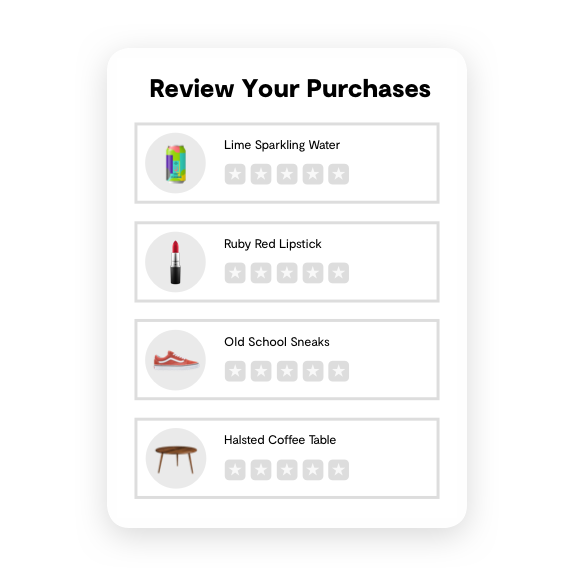
The good news is PowerReviews created the Review Your Purchases feature. This lets you send customers a form that allows them to rate, write reviews and add visual content for several products–all on a single page.
Suddenly, writing reviews doesn’t seem so tedious.
This is a must for brands and retailers who see shoppers buy multiple items in one purchase. Also, our tools can prioritize specific products to the top of the review submission list so your low-rated or low-count reviews appear first.
Collect more review content by making it easier and faster for your customers to give feedback.
Verified Reviewers Matter to Your Customers
If we haven’t already convinced you, customers are often skeptical before buying. Even more so, your customers simple visual cues to let them know visuals and content are authentic.
To push authenticity further, it’s smart to designate where your reviews are coming from and who wrote the content. That’s why so many people trust review badges when inspecting review content.
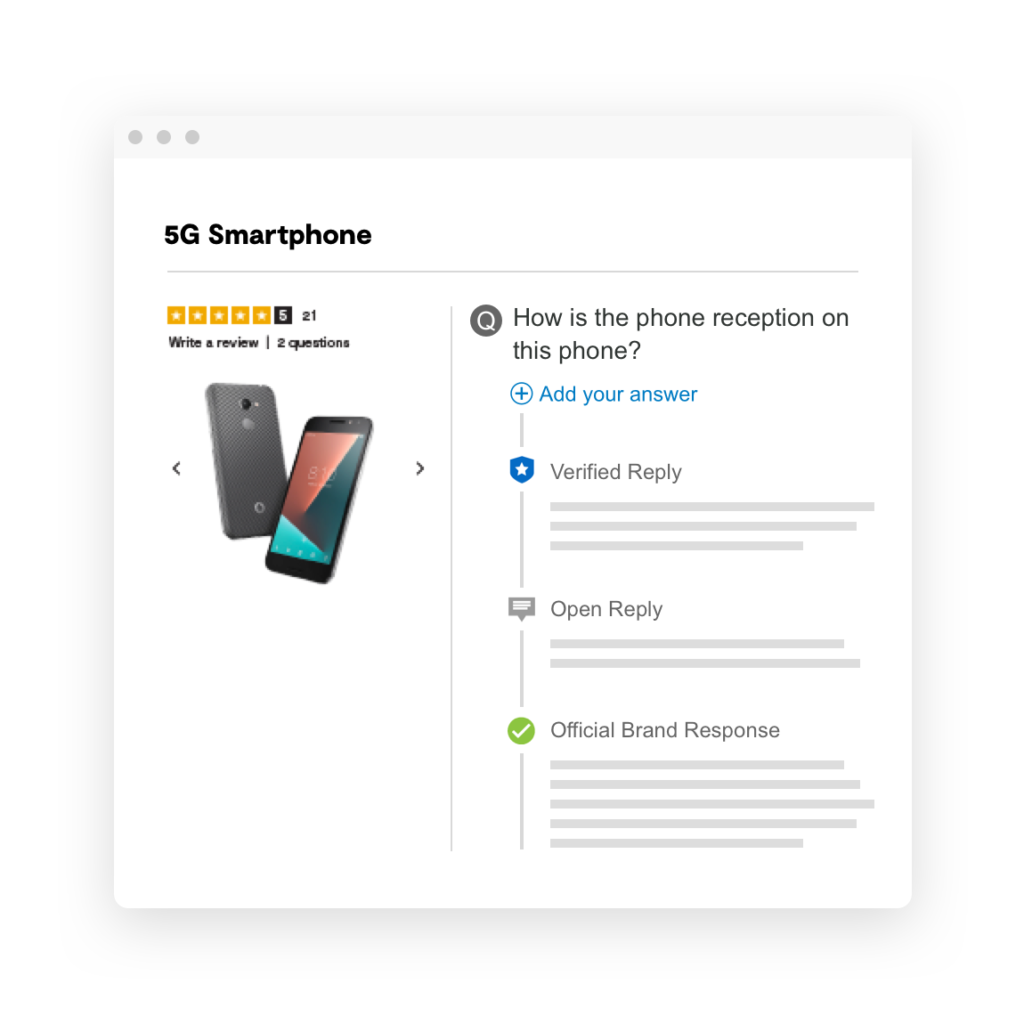
Through Brand Engage, reviewer badges give buyers confidence knowing who specifically left the review and whether it was a verified buyer or from the actual brand.
Data from the Growing Power of Reviews report, showed more than 36% of shoppers believe it’s important to clarify and identify who wrote the review content, such as a verified buyer. When people know who uploaded content and wrote the review, customers feel more at ease with their decisions.
7. Start Product Sampling Campaigns
In case you haven’t noticed, one of the major benefits of Instagram is the ease of selling products on its platform. Whether it’s from a referrals or paid social ads, consumers buy on Instagram. That means there’s a lot of power in mobile sales for you.
A report from the Global Web Index found Instagram users were 70% more likely to buy a product off a mobile device versus those who don’t use the social platform. Additionally, data showed nearly 1 in 3 Instagram users have already bought on mobile.
https://www.instagram.com/p/Bvb0nbbFUnA/
To get more user-generated content, you have to go beyond ads and organic posts. By enabling a product sampling community, you put the items in the hands of everyday influencers to write reviews, spread the word and take pictures or videos of the experience.
Product sampling campaigns are a great way to reach more everyday users. This is especially important for brands figuring out how to have a successful product launch strategy.
https://www.instagram.com/p/BvCzvOngcEs/
SeroVital does a great job at promoting their product with everyday influencers who can speak to their own crowds on social. The brand promotes their story with their customers and works with BzzAgent to reach a community of more than 200 million followers.
Not only do you spread the word, but SeroVital collects a lot of helpful visuals to add to its user-generated content collection. There are ways to boost your visual collections and when you do so, you tell a better story of your brand.
Looking for help to start with your user-generated content initiatives? Our team can show you just how easy it is to set up visual collection tools, so request a demo today!





